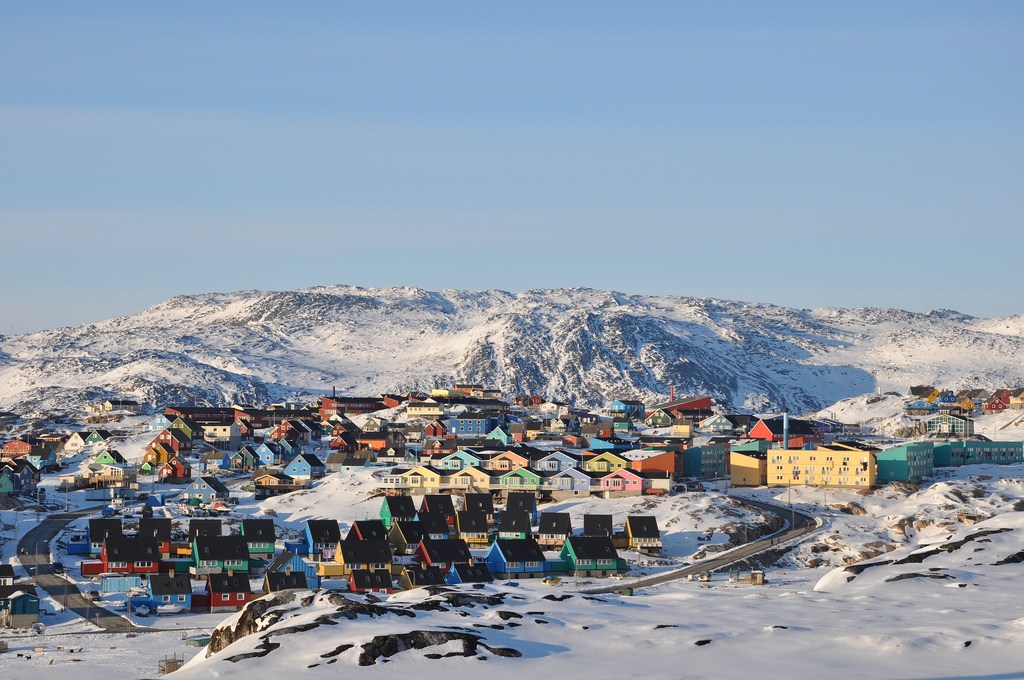What Makes Greenland’s Population Unique? Life on the World’s Largest Island
 What Makes Greenland’s Population Unique? Life on the World’s Largest Island
What Makes Greenland’s Population Unique? Life on the World’s Largest Island Greenland is full of fascinating contrasts — it’s the world’s largest island, yet home to one of the smallest and most tightly connected populations on Earth. Exploring the Greenland population means uncovering a story of endurance, adaptation, and identity. On this frozen expanse of land, people have learned to live in harmony with the harsh Arctic environment, blending ancient Inuit traditions with the demands of modern life.
Greenland: Geography, Scale, and Population
Greenland covers over two million square kilometres, but about 80 percent of it is buried under ice. Only a narrow coastal belt remains ice-free, and this is where almost everyone lives. Despite its size, the Greenland population numbers only around 56,000 people, making it one of the least densely populated regions in the world.
The vast majority of residents live along the coastline in towns and fishing villages, often located within fjords protected from the harshest winds. The capital city, Nuuk, is the heart of modern Greenlandic life, home to nearly one-third of the entire population. The country’s geography defines its settlement patterns — the people live where the sea provides, where fishing is possible, and where small communities can thrive in isolation.
Ethnicity, Language, and Identity
Greenland’s population is unique in its strong indigenous roots. Around 85 to 90 percent of its people are of Inuit or mixed Inuit heritage, while the remaining share includes Danes and other Europeans. Within the Inuit community, there are regional groups such as the Kalaallit in the west, the Inugguit in the north, and the Iit in the east, each with distinct dialects and traditions.
Language is central to Greenlandic identity. The official language is Kalaallisut (Greenlandic), while Danish remains widely used in administration and education. Most Greenlanders are bilingual, navigating between their native tongue and the remnants of Danish colonial influence. This balance of old and new shapes both personal and collective identity, keeping culture alive while embracing progress.

Daily Life: Tradition and Modernity
Life in Greenland is a careful balance between preserving age-old traditions and embracing the benefits of modern civilization. While the Arctic environment presents many challenges, the people of Greenland have developed a lifestyle rooted in cooperation, adaptability, and respect for nature.
Most communities depend on fishing, hunting, and seafood exports for their livelihood. At the same time, public services — education, healthcare, administration — provide employment for many residents, ensuring that even remote areas maintain access to essential support systems.
Since there are no roads connecting most towns, transportation requires creativity and resilience.
Typical ways people travel include:
- Boats and ferries during the ice-free months;
- Small planes and helicopters connecting major towns;
- Snowmobiles and dog sleds in the northern regions during winter.
Supplies such as food, fuel, and construction materials mostly arrive by sea, making logistics costly and weather-dependent.
Despite these obstacles, Greenland’s towns are remarkably modern. Most have reliable internet access, schools, libraries, medical clinics, shops, and cultural centres. The contrast between a modern classroom and the surrounding wilderness reflects the dual nature of life on the island — rooted in both progress and tradition.
Isolation, however, remains a challenge. Goods are expensive, and many young Greenlanders move abroad (especially to Denmark) for education or work opportunities. This often leaves smaller settlements dependent on strong community bonds. Neighbours help each other in practical ways:
- Sharing freshly caught fish and seal meat;
- Repairing boats or snowmobiles together;
- Supporting families during harsh winter storms.
These acts of cooperation are more than survival strategies — they embody the heart of Greenlandic culture: resilience, solidarity, and deep respect for both people and the environment.
Demographic Trends and the Future
Greenland faces several demographic shifts that will shape its future. While the population remains stable, there has been a gradual decline as younger generations move abroad. Urbanization is also increasing, with more people leaving small settlements for larger towns such as Nuuk, Sisimiut, and Ilulissat.
An aging population presents new social challenges, especially as outmigration reduces the number of young workers. At the same time, Greenland continues to expand its autonomy within the Danish kingdom. The drive for greater self-governance reflects a desire for cultural and political independence — a process deeply tied to the resilience and unity of its people.
Climate change is another key factor affecting the Greenland population. Melting ice and warmer temperatures are transforming local economies, opening up new industries such as tourism and mining. These changes could attract newcomers but also threaten traditional ways of life that depend on the Arctic environment.
What Makes Greenland’s Population Unique
- Tiny numbers, vast land: Despite being the world’s largest island, Greenland has fewer than 60,000 inhabitants, most concentrated in a few coastal towns.
- Indigenous majority: The Inuit form the backbone of society, preserving language and culture while adapting to modern life.
- Isolation as strength: Physical distance from the world has helped protect cultural heritage and strengthen social bonds.
- Adaptability: Generations of Greenlanders have learned to balance ancient traditions with the challenges of modern living.
- Resilience: From harsh weather to economic uncertainty, the population endures with a deep sense of community and pride.
